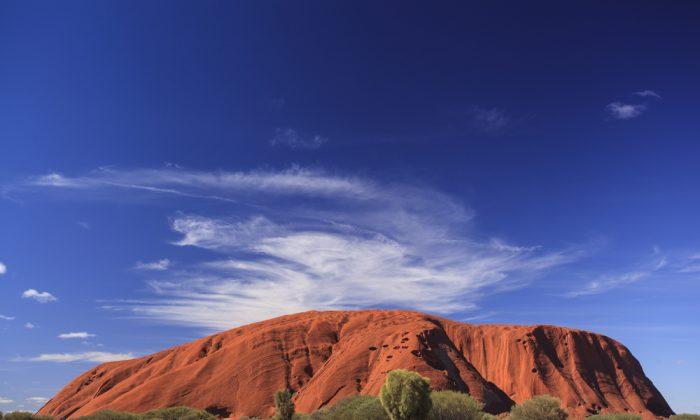In the very center of the Australian continent is a vast and featureless desert of red sand and scrub vegetation that stretches in all directions as far as the eye can see. Only two features relieve this otherwise monotonous landscape – the giant red sandstone monolith known as Ayers Rock and the lesser-known conglomerate hills commonly referred to as The Olgas. The indigenous Anangu Aborigines who are the stewards of this ancient land refer to these features by their traditional names – Uluru and Kata Tjuta, respectively.
To say that the UNESCO World Heritage Uluru-Kata Tjuta National Park is remote would be an understatement. Located more than 500 miles from the nearest town, the only way to reach the park is to drive for days through a harsh, unforgiving land, or to fly in with Qantas, the sole operator serving the tiny airport. Once at Uluru, the only accommodations available are at one of five hotels in the American-owned Voyages resort complex. The Voyages operation is a monopoly in every sense of the word. Not only do they own all five hotels, they also own the grocery store, the tour company, the gift stores, the restaurants, the shuttle services, etc.
The result is twofold. First, because they have no competition, their prices are exorbitant. I am in the least expensive hotel room they offer – $154 per night. The salad I had for lunch yesterday set me back $20. Company-owned shuttle buses carry tourists from the resort to the National Park at a cost of $40 for the five-mile ride.
The facilities are in poor condition – with winter temperatures approaching zero at night, I repeatedly heard guests complain that the heat did not work in their room and the resort’s only answer was to deliver more blankets. The employees are surly at best and in most cases downright rude, acting as if guests are an imposition on their time. The signage is poor and it is difficult to find your way around the resort. There is limited information made available about how, when and where the shuttles operate, etc., etc.
Despite all of the above, the Uluru-Kata Tjuta National Park is not to be missed. On the evening I arrived I climbed to an observation point and watched Ayers Rock change from red to purple in the rays of the setting sun. The following morning I rose before dawn and caught a shuttle to the sunrise viewing site. In near-zero temperatures I watched Ayers Rock emerge from the inky night, slowly turning from black to purple to deep red and finally to a flaming orange-red (left and below).
Copyright © 2014 by Hole in the Donut Cultural Travel. This article was written by Barbara Weibel and originally published on holeinthedonut.com.
*Image of Uluru via Shutterstock






Friends Read Free